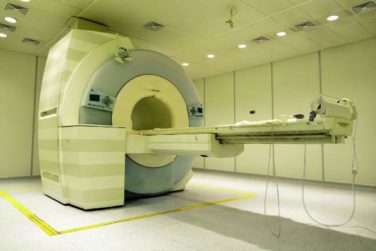FROM ANNALS OF ONCOLOGY
Autologous stem-cell transplantation can be highly effective in securing better long-term results for patients undergoing rituximab-based chemotherapy for transformed indolent lymphoma with high-grade histologies, according to a retrospective study published online in Annals of Oncology.
ASCT improved outcomes in patients with sequential TIL (S-TIL), but not in those with composite/discordant TIL (CD-TIL). The benefits of ASCT were greater in patients who were rituximab-naive at transformation, wrote Dr. Carsten Madsen of Denmark’s Aarhus University Hospital, and his coauthors (Ann. Oncol. 2014 Nov. 18 [doi: 10.1093/annonc/mdu537]).
Patients with “CD-TIL had a better outcome than [did those with] S-TIL regardless of treatment strategy at transformation. With regard to ASCT in particular, we found that it had a beneficial influence on outcome limited to S-TIL,” the investigators concluded.
In a multicenter cohort study, Dr. Madsen and his associates used the National Danish Pathology Registry to identify patients aged 18-68 years with histologically verified TIL diagnosed between 1999 and 2012 at the Aarhus, Odense, and Aalborg university hospitals in Denmark. Researchers looked for TIL, defined as “a biopsy proven IL in addition to a DLBCL [diffuse large B-cell lymphoma] lesion that was either coexisting at primary diagnosis or histologically ascertained over time through a subsequent biopsy.” In total, 85 patients were selected for the study – 72 subjects with follicular lymphoma at histological grades between 1 and 3A, and 13 subjects with otherwise unspecified forms of indolent lymphoma (IL).
Data for all patients were used to calculate 5-year overall survival (OS) and progression-free survival (PFS) rates. Calculations were done in three cohorts: an “all TIL” whole cohort, a CD-TIL cohort of subjects with “coexisting evidence of both indolent and aggressive histology at diagnosis,” and an S-TIL cohort of subjects who transformed after having indolent lymphoma for a prolonged period of time.
Of the 85 subjects, 54 (64%) received ASCT consolidation and 31 (36%) did not.
In the “all TIL” cohort, the OS and PFS rates were higher in subjects who received rituximab-containing regimens and ASCT compared with those who received only the chemotherapy. The OS rates were 67% vs. 48% (P = .11); the PFS rates were 60% versus 30% (P = .02).
There was no evidence of an advantage in the CD-TIL cohort, the OS rates were 76% for the combined therapy versus 67% for those given rituximab-based chemo only (P = .66), and the PFS rates were 71% versus 36% (P = .54).
The sequential TIL cohort, however, saw improvements in both OS and PFS – 62% versus 36% (P = .07) and 53% versus 6% (P = .002), respectively – regardless of whether or not patients had previously received rituximab-based chemo.
Prospective clinical trials, specifically designed for TIL patients, should be encouraged to investigate the optimal treatment strategy for this still largely unmet clinical need, the researchers concluded.
The authors disclosed no conflicts of interest.




